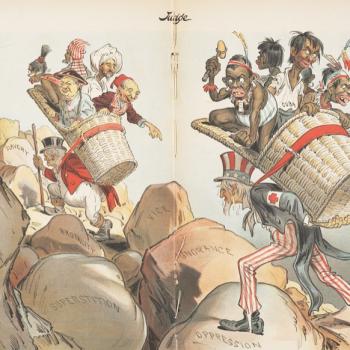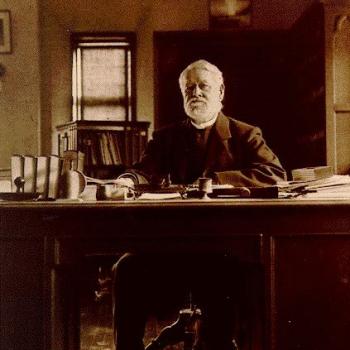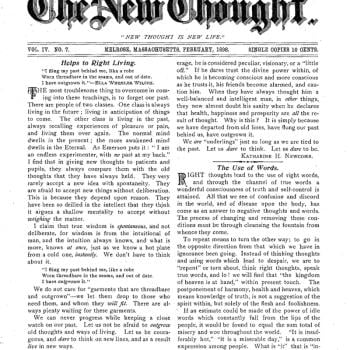I have been posting about the 1668 novel The Adventures of Simplicius Simplicissimus, by Johann von Grimmelshausen, a wonderful source for understanding the Early Modern period. Oddly, it also has a lot to say about contemporary global Christianity, in the sense that there are some remarkable parallels between the social and cultural worlds of Europe then, and portions of Africa (for instance) today. One striking parallel involves the whole business of literacy and learning to read, and how that affects attitudes to the Bible. Let me describe the seventeenth century novel first, and then point to strictly modern day parallels. I particularly want to stress one key concept, which is that of neo-literacy.
In the great German novel, the young Simplicius Simplicissimus is living with a pious hermit. He sees him read the Bible frequently, but cannot grasp the concept of reading. We should remember that still, in the seventeenth century, literacy levels even in the heart of Europe would have been very low. The hero records that,
Now when first I saw the hermit read the Bible, I could not conceive with whom he should speak so secretly and, as I thought, so earnestly; for well I saw the moving of his lips, yet no man that spake with him: and though I knew naught of reading or writing, nevertheless I marked by his eyes that he had to do with somewhat in the said book.
So I marked where he kept it, and when he had laid it aside I crept thither and opened it, and at the first assay lit upon the first chapter of Job and the picture that stood at the head thereof, which was a fine woodcut and fairly painted: so I began to ask strange questions of the figures, and when they gave me no answer I waxed impatient.
Believing the figures in the illustrated Bible are real people, he speaks to them, and he complains that they don’t speak to him the way they speak to the hermit. He is also worried that the soldiers in the illustration are about to stage a raid, to cause trouble and start a fire. The hermit then explains:
“Nay,” quoth he again, “but they be not alive; they be made only to call up before our eyes things that happened long ago.” “How;” said I, “thou didst even now talk with them: how then can they be not alive?” At that the hermit must, against his will and contrary to his habit, laugh: and “Dear child,” says he, “these figures cannot talk: but what they do and what they are, that can I see from these black lines, and that do men call reading. And when I thus do read, thou conceivest that I speak with the figures: but ’tis not so.”
Yet I answered him: “If I be a man as thou art, so must I likewise be able to see in these black lines what thou canst see: how then may I understand thy words? Dear father, teach me in truth how to understand this matter.”
So said he: “‘Tis well, my son, and I will teach thee so that thou mayest speak with these figures as well as I: only ’twill need time, in which I must have patience and thou industry.”
With that he wrote me down an alphabet on birch-bark, formed like print, and when I knew the letters, I learned to spell, and thereafter to read, and at last to write better than could the hermit himself; for I imitated print in everything.
Reading this passage gives me a powerful sense of déjà vu from many stories from around the world, and the extremely tough time non-literate people of understanding the whole idea of books and reading.There is a famous story from the Spanish conquest of the Incas in 1532. Reportedly, the Spanish offered a Bible to the Inca Emperor Atahualpa, explaining how, through that book, God spoke to them. Atahualpa put the book to his ear but heard nothing, no God speaking. He threw the Bible to the floor in disgust, and his apparent blasphemy provoked a bloody battle.
To take an example from modern day Africa, Yvonne Vera’s 1993 novel Nehanda presents a fictionalized but credible account of an African’s first encounter with a white Christian cleric. The scene is set in the opening years of the twentieth century, in what is today Zimbabwe. Seeing the missionary reading, the African, Kaguvi, asks him, “What will happen when these leaves turn to dust?” The European explains, “There are many copies of this book, and more can be produced. This book can never die.” Kaguvi is puzzled, all the more so when the clergyman asserts that he only worships one God: but is not the immortal book a god? “Kaguvi is fascinated. The priest’s god can break into many pieces. But he also feels pity for a god who has to manifest himself in this humble manner. He does not understand why a god would hide behind the marks on a page. ‘He is inside your book, but he is also in many books. . . . Your god is strange indeed’.” In some mysterious way, the book is associated with the power of divinity.
Then as now, when people began to read, they were not immediately at ease with books or texts. Not for generations would books and magazines be something that one picks up casually in an idle moment. To understand the attitudes of the newly literate, we can look at the global impact of John Bunyan’s text The Pilgrim’s Progress, which was published just a decade after The Adventures of Simplicius Simplicissimus. Pilgrim’s Progress has enjoyed phenomenal success in Christian Africa. According to South African scholar Isabel Hofmeyr, part of Bunyan’s appeal was that he himself grew out of a plebeian culture that, in terms of the status of literacy, resembled much of twentieth-century Africa. In this sense, like was speaking to like.
Bunyan himself was literate, but he came from a society still rooted in oral culture, with an ambiguous attitude toward the written text. Though documents carry immense weight, they are mysterious things, glimpsed in visions or bestowed by angelic visitors. In The Pilgrim’s Progress, documents appear as flying scrolls or cryptic engravings on a throne. Texts “are held in awe, but not entirely trusted,” so that their authenticity must be confirmed by a mystical visitation, by a dream or vision.Angels regularly feature in such scenarios.
The status of texts and writing is further complicated by the oppressive ways in which documents are used by the elite forces of government and law. “Documents are paradoxes. One the one hand, they are props in the theater of ruling, policing and dragooning. On the other, they betoken spiritual authority.” Documents can be passes—papers that the police demand to see before they allow one to travel—or they can be passports to heaven.
In such a semi-literate or neo-literate world, the power to read can itself be seen as a miraculous phenomenon. Some modern African prophets report receiving the gift of literacy through heavenly intervention, or transmit their revelations through special scripts revealed to them through divine inspiration. The Xhosa prophet Ntsikana “discovered hymns fully formed on the hem of his cloak.” Another South African prophet, Isaiah Shembe, reported, “No, I have not been taught to read and write, but I am able to read the Bible a little, and that came to me by revelation and not by learning. It came to me by miracle. . . . God sent Shembe, a child, so that he may speak like the wise and educated.”
Reading such stories, Americans might recall the career of prophet Joseph Smith, with his secret writings, gold plates, angelic interventions, and mystical decoding stones, and his scorn for accredited religious experts. I would argue that the author of the Book of Revelation offers a classic example of neo-literacy.
The special value attached to the written text does not mean that new Christians were credulous or believed every word of the new story to which they were exposed – often, they asked acute questions – but emerging churches were and are generally built on a profound veneration for the written text. In a traditional society, the ability to read the Bible becomes an act of self-assertion, confidence, and potentially resistance.
And that takes us neatly back to the impact of the Bible in Early Modern Europe, and the great struggles between Protestants and Catholics.













